October 2011, Manchester United 1–6 Manchester City. That was the Red Devils’ heaviest defeat since the inauguration of the Premier League. Who would have thought the historical scoreline would haunt United again, even before a decade has passed? This time it was José Mourinho’s Tottenham Hotspur who successfully ran riot at Old Trafford. Yes, that defensive manager.
United started the game well after winning a penalty just within 30 seconds, which successfully converted by Bruno Fernandes. Yet, that was just that. Tottenham reacted by scoring two goals in the next five minutes and added two more to complete the first half; virtually finishing the contest. Some might say Anthony Taylor’s controversial decision to expulse Anthony Martial was the main reason behind this staggering result, but we beg to differ. We think Ole Gunnar Solskjær also has a big responsibility because of his questionable tactics. Without further ado, this tactical analysis will inform you how the match unfolded.
Lineups
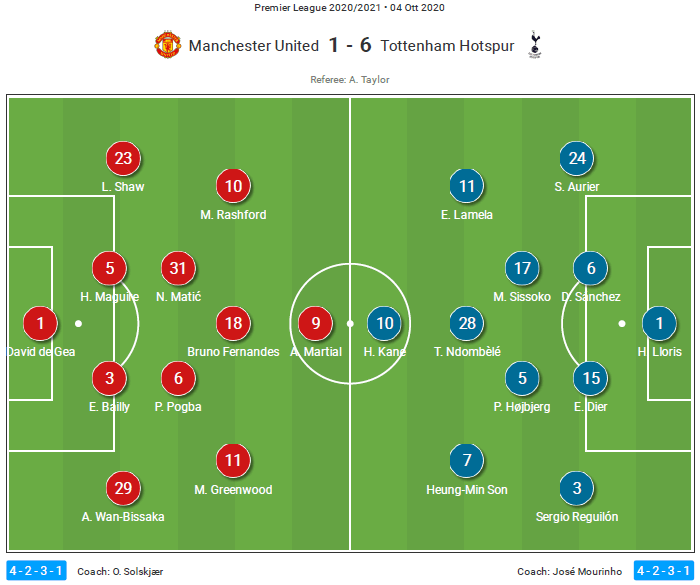
Solskjær set his team up in the regular 4–2–3–1. Eric Bailly started the game alongside Harry Maguire while Aaron Wan-Bissaka and Luke Shaw flanked them to complete the backline. Upfront, Martial led the attacking line with the support of Mason Greenwood, Fernandes, and Marcus Rashford behind him. United’s bench was filled with names like Fred, Scott McTominay, and former Ajax Amsterdam player Donny van de Beek.
In the opposite side, Mourinho went for 4–2–3–1 which can also be shifted to 4–3–3 at times. The midfield trio consisted of Pierre-Emile Højbjerg, Moussa Sissoko, and Tanguy Ndombélé, in which all of them had different roles in this game. The frontline then was spearheaded by talisman Harry Kane, flanked by Erik Lamela and former Bundesliga star Son Heung-min. Tottenham’s bench was filled with names like Dele Alli, Lucas Moura, and Ben Davies.
United’s attacking plans
As United managed to score first, we’ll start this analysis by examining their attacking tactics. In general, United tended to build their attacks from the left flank. That’s because they have players like Shaw, Paul Pogba, Rashford, and Martial who are good when combining there.
Structure-wise, United deployed a lopsided 3–1–5–1-ish shape. In this structure, the full-backs had differing roles. Shaw was given more license to roam forward and play in advanced areas, while Wan-Bissaka would only join the attack should United try to switch their play to the right flank.
The next contrasting roles could be found in the midfield. Due to Shaw’s advanced positioning, Nemanja Matić was tasked to play a bit deeper in the left half-space. Then Matić’s vacated space could be filled by the drifting Pogba. The objective behind this was to allow Pogba to join the left-flank overload.
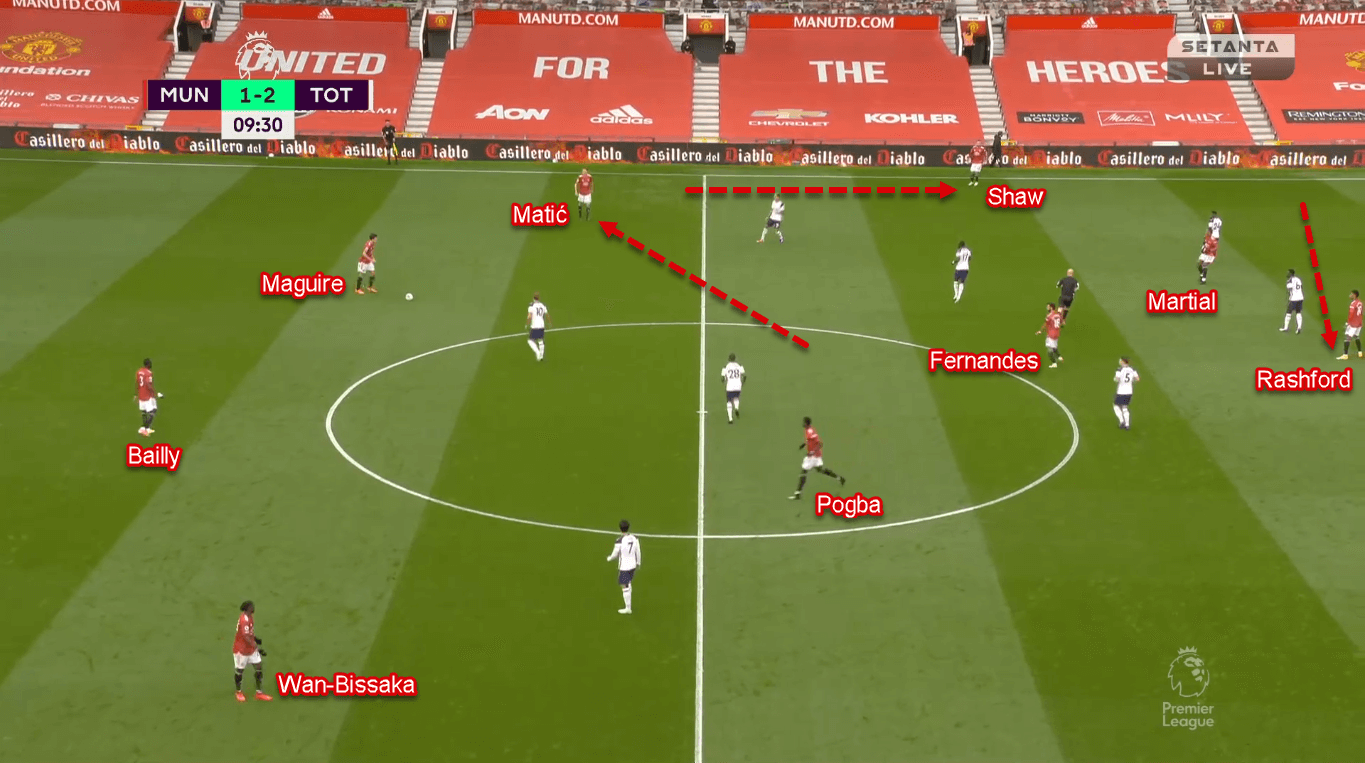
Moving into the final third, Solskjær allowed his attackers to rotate. This means that Fernandes could be seen playing in the flank while Rashford played centrally. Sometimes, Rashford could also switch positions with Martial in the left flank. The goal was to disrupt Tottenham’ defensive block and help United to combine easier.
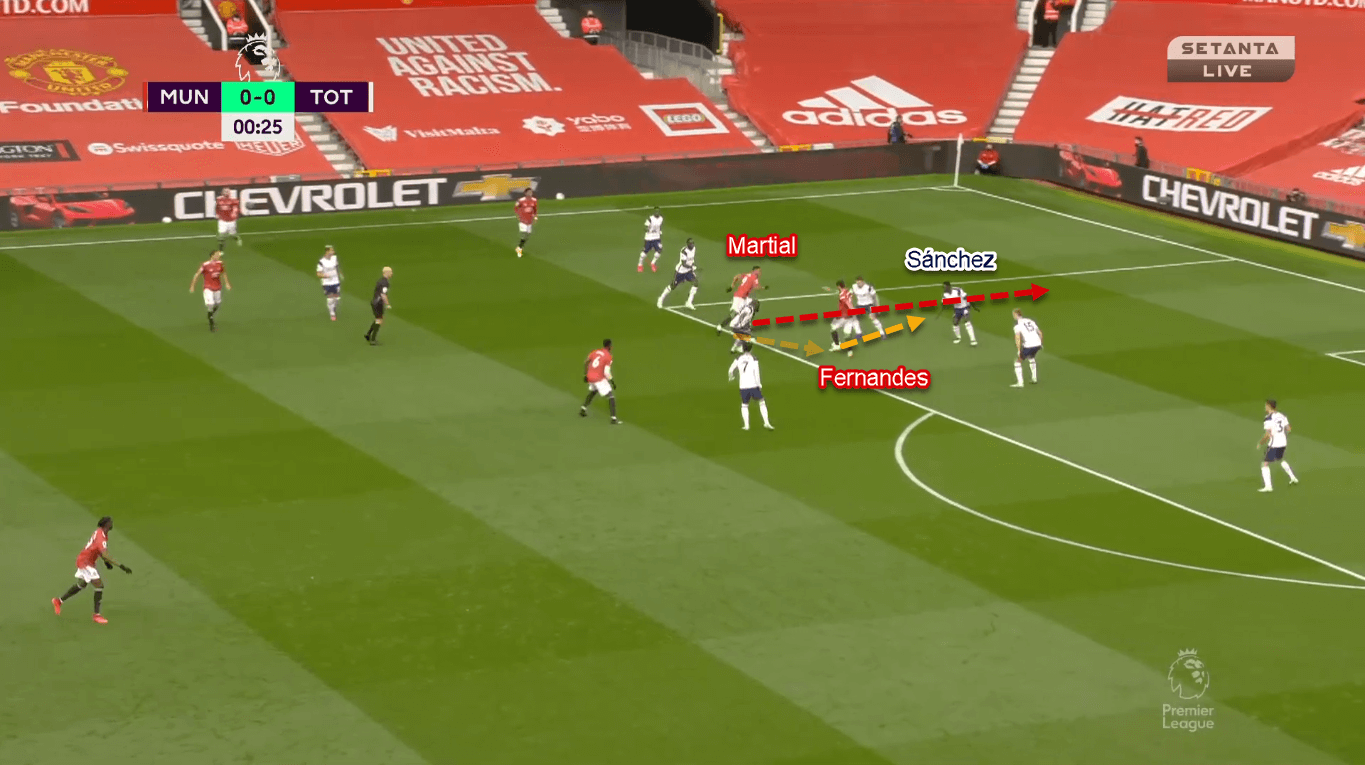
It wasn’t just that, though. Moving into the box, United relied on short one-two combination that could release an attacker in behind. The most notable combo was, of course, the one that led to Martial’s fall inside the box. United could also vary by not playing a wall-pass in behind. Instead, the receiver could turn and make a shot for himself from the edge of the box.
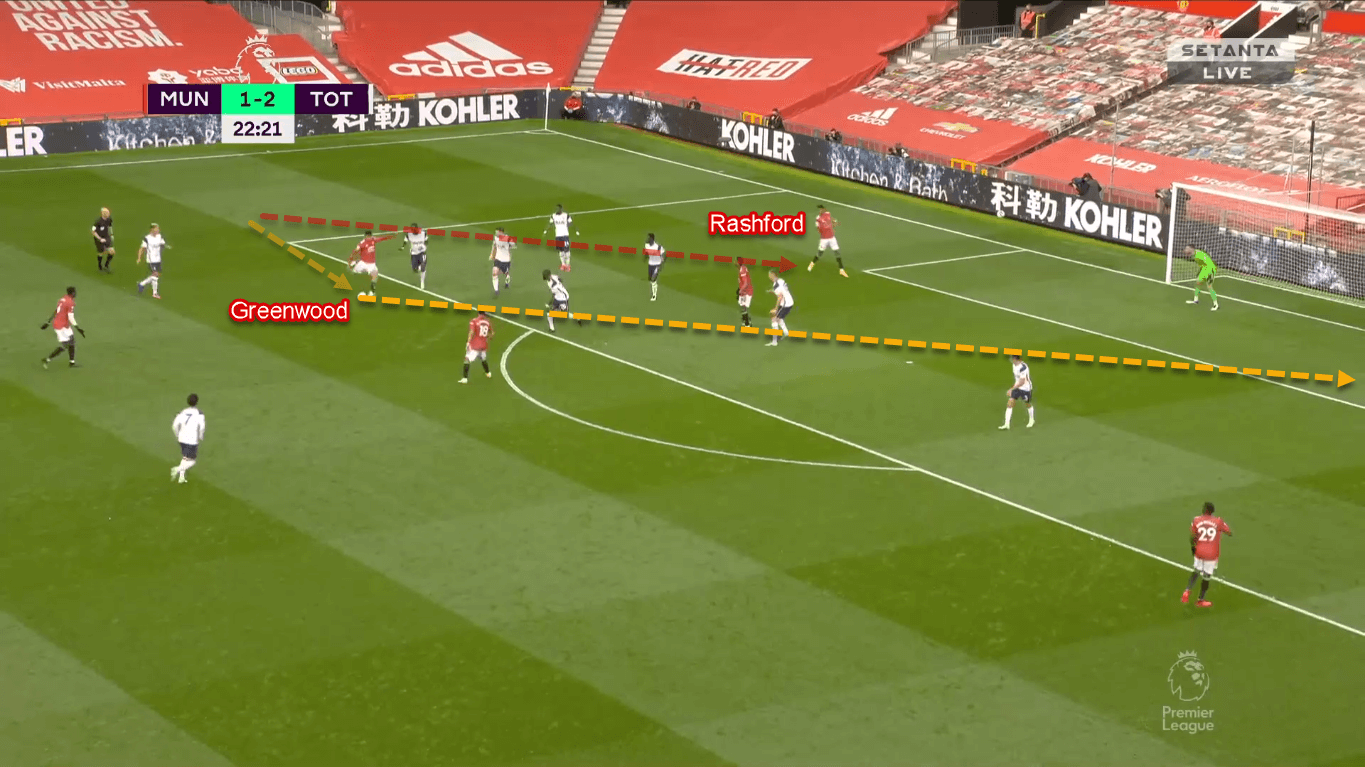
Smart defending by Mourinho’s armada
The Lilywhites initially defended in a mid-block 4–1–4–1. However, they later moved to a vertically compact 4–2–3–1 when defending deeper. That’s probably because they already got the lead since the seventh minute.
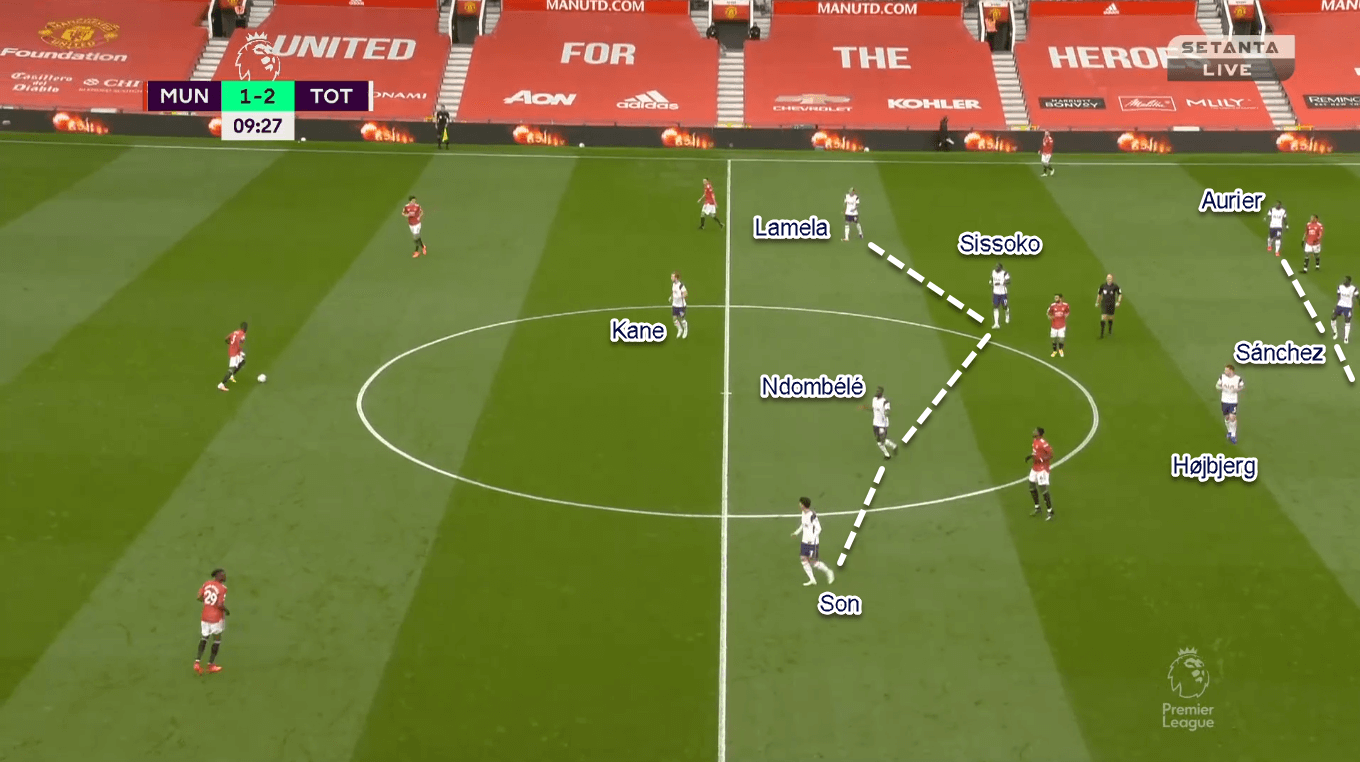
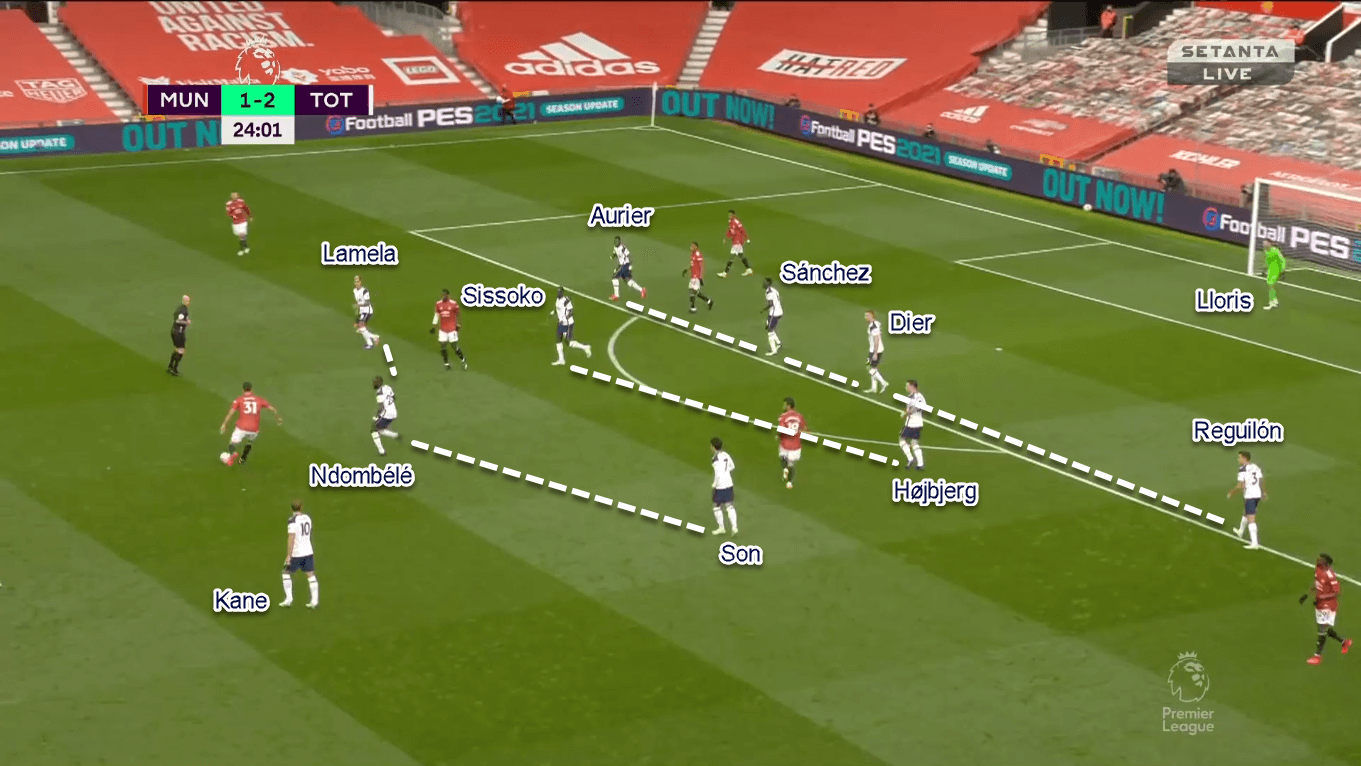
When defending in a deep 4–2–3–1, Mourinho instructed his men to maintain vertical compactness. This was chosen to allow no space in between the lines; thus prevent the Red Devils to access and exploit the area. This would also allow Spurs to commit so many bodies back, and practically flood the zone in front of the box.
To further deny United’s left-focused approach, the Portuguese made a little adjustment to his defensive strategy. That was instructing Lamela to drop from the attacking midfield line and defend alongside Serge Aurier. By doing so, he would be somewhat closer to Shaw and also help the visitors to defensively overload their right flank.
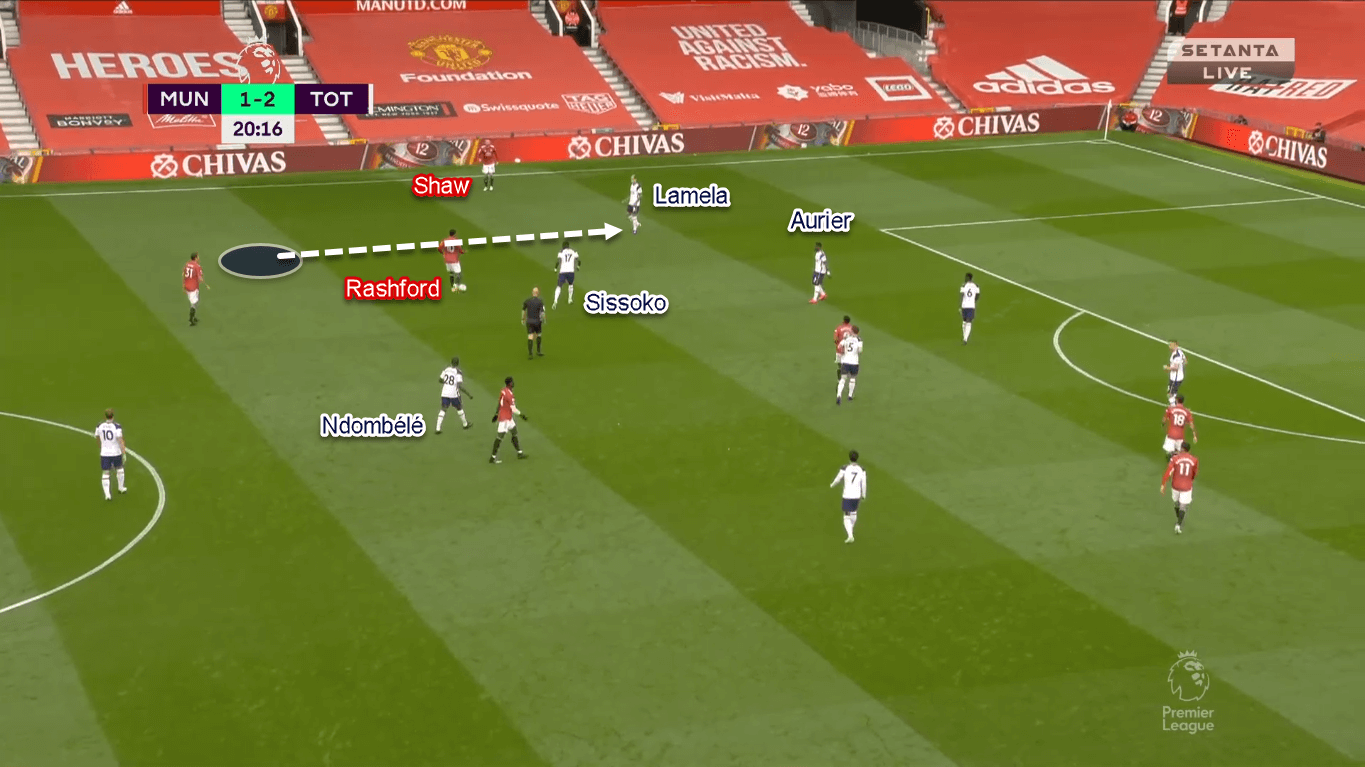
The defensive strategy and its adjustment proved effective for Spurs. If we look at the statistics, United only managed to get three open-play shots throughout the game. Those shots combined to an expected goals (xG) tally of 0.14. Lockdown.
Tottenham enjoyed the possession
Mourinho’s Tottenham finished the game with a staggering 68% ball possession. Some might say that this happened mostly because of Martial’s expulsion. But, the stats beg to differ. If we look at the numbers, Spurs enjoyed about 55.5% of the ball before Martial was sent off in the 28th minute. How did they do that?
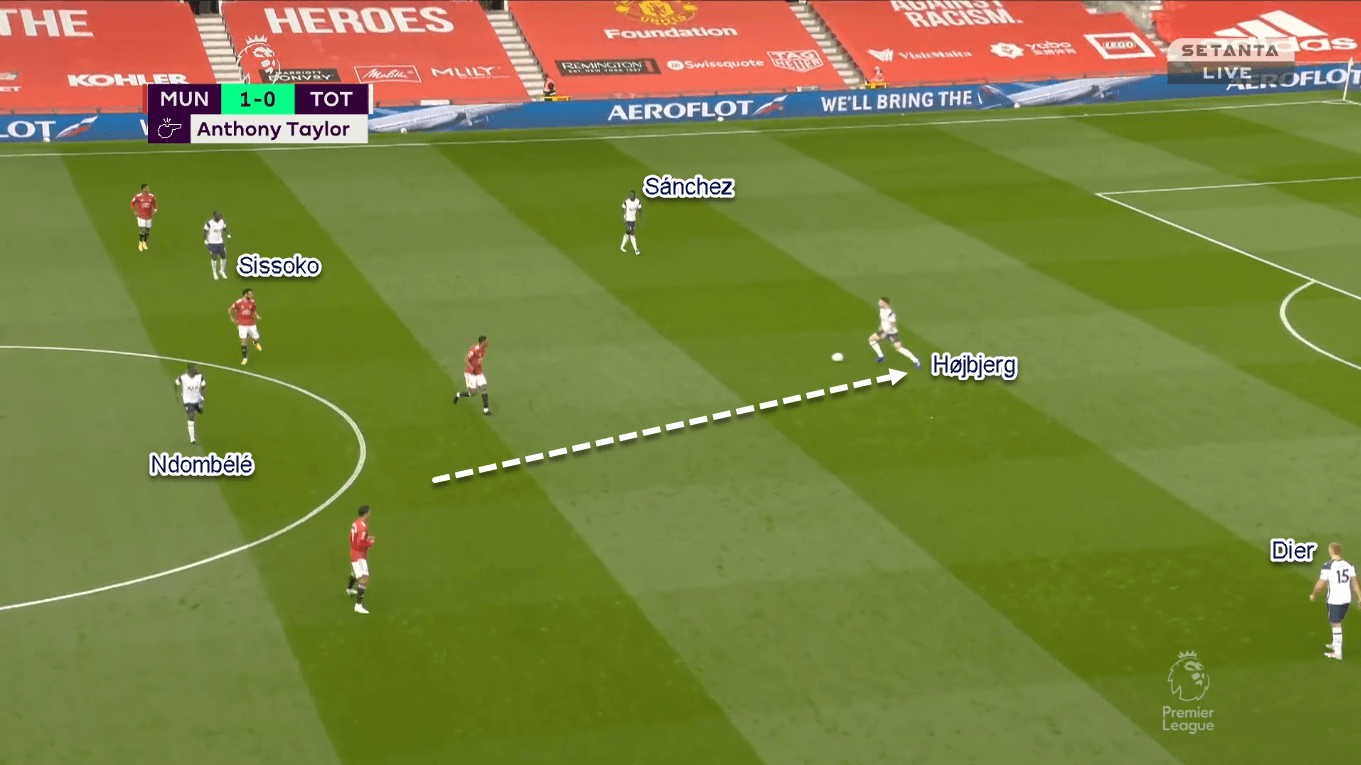
Structure-wise, they were playing in a 3–4–3-ish shape whenever they got the ball. The first line consisted of the centre-backs joined by Højbjerg in between them. The dropping movement of the Dane was important to help Spurs have a numerical superiority against United’s forward(s) in their build-ups.
Højbjerg’s movement then would allow both full-backs to go forward and provide the width. It means that Aurier and Sergio Reguilón could be found playing alongside the midfielders instead of the centre-backs. Their wide positionings were also crucial to help Spurs in the final third. That’s because both Lamela and Son were tasked to play inside their respective half-spaces.
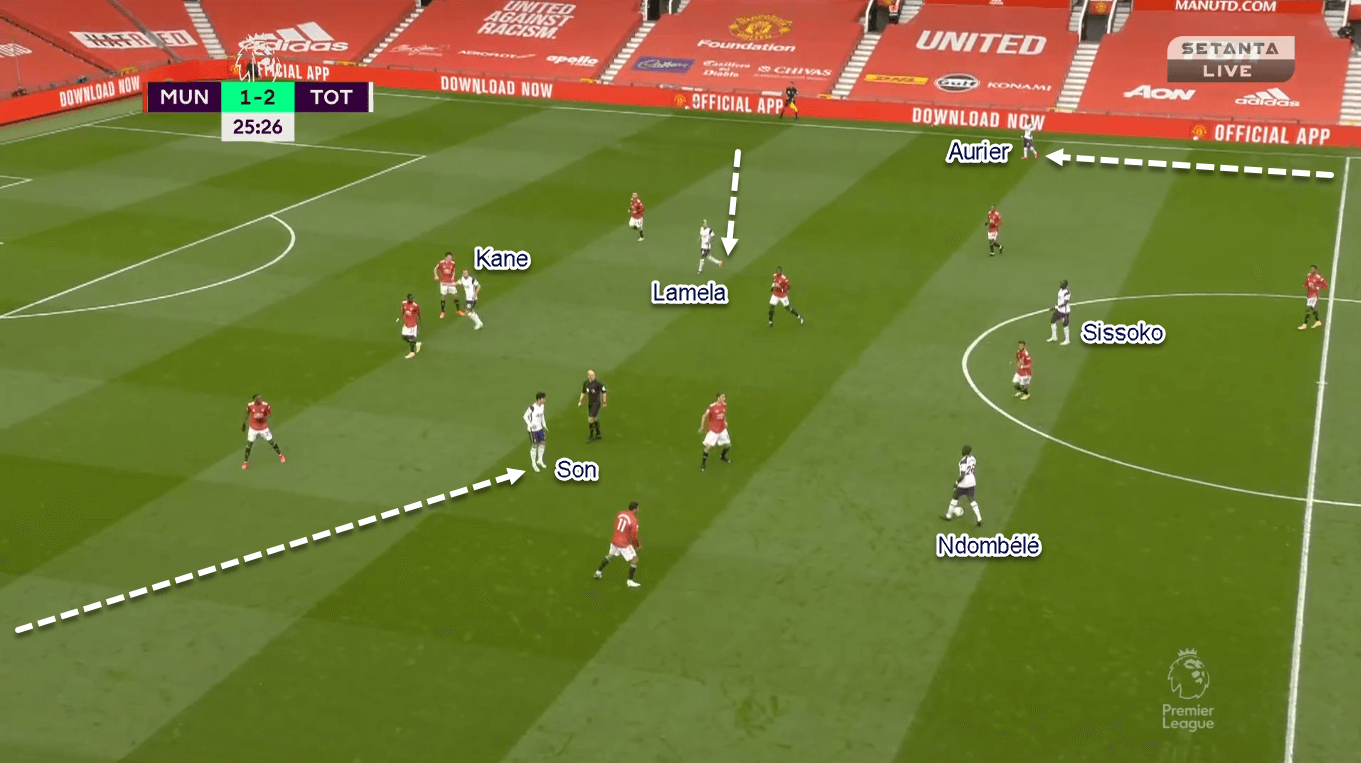
Despite the numerical overload, Spurs tended to build their attacks more safely. That means the centre-backs wouldn’t risk playing the ball centrally to the midfielders. Instead, Eric Dier and co. were mainly tasked to send direct balls to the left half-space; targeting Bailly in the process. For a fact, Højbjerg and the centre-backs combined for 24 long passes, with 19 (79.16%) of them were accurate.
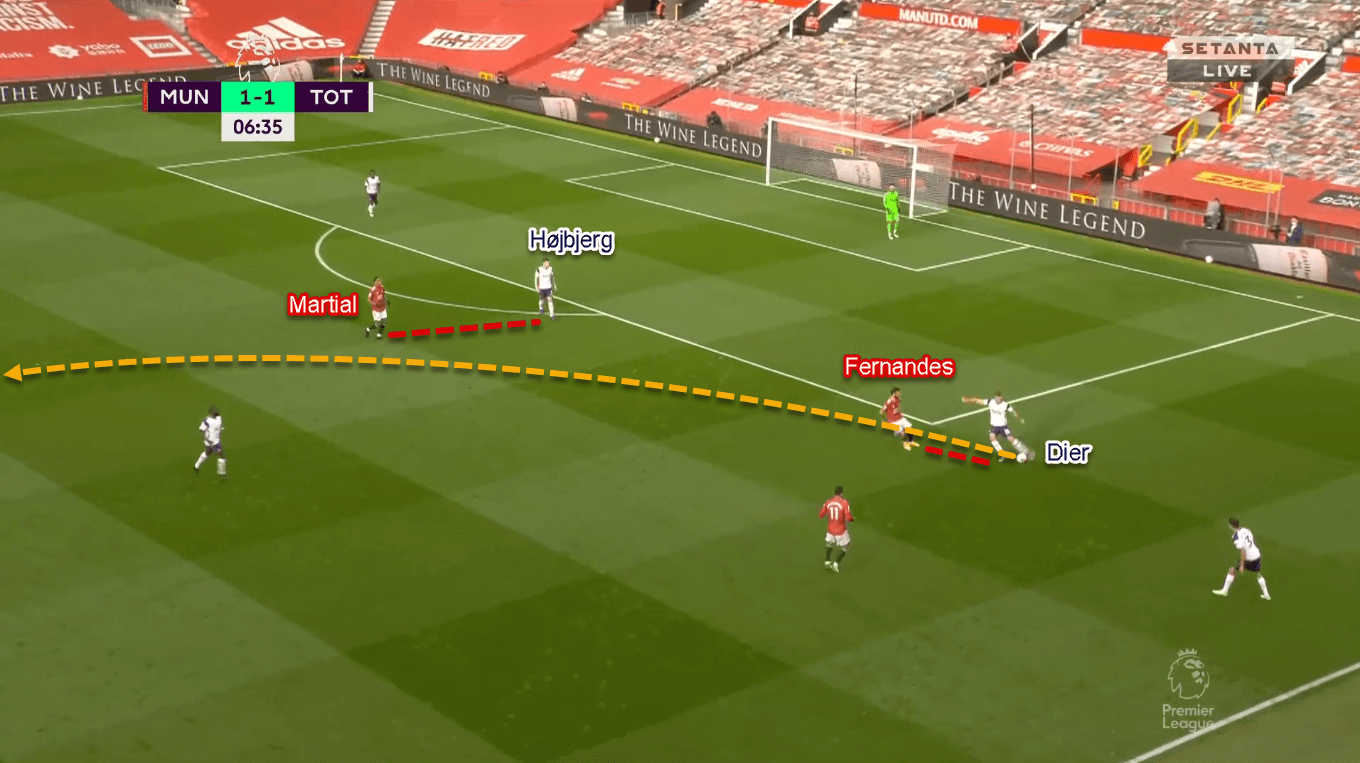
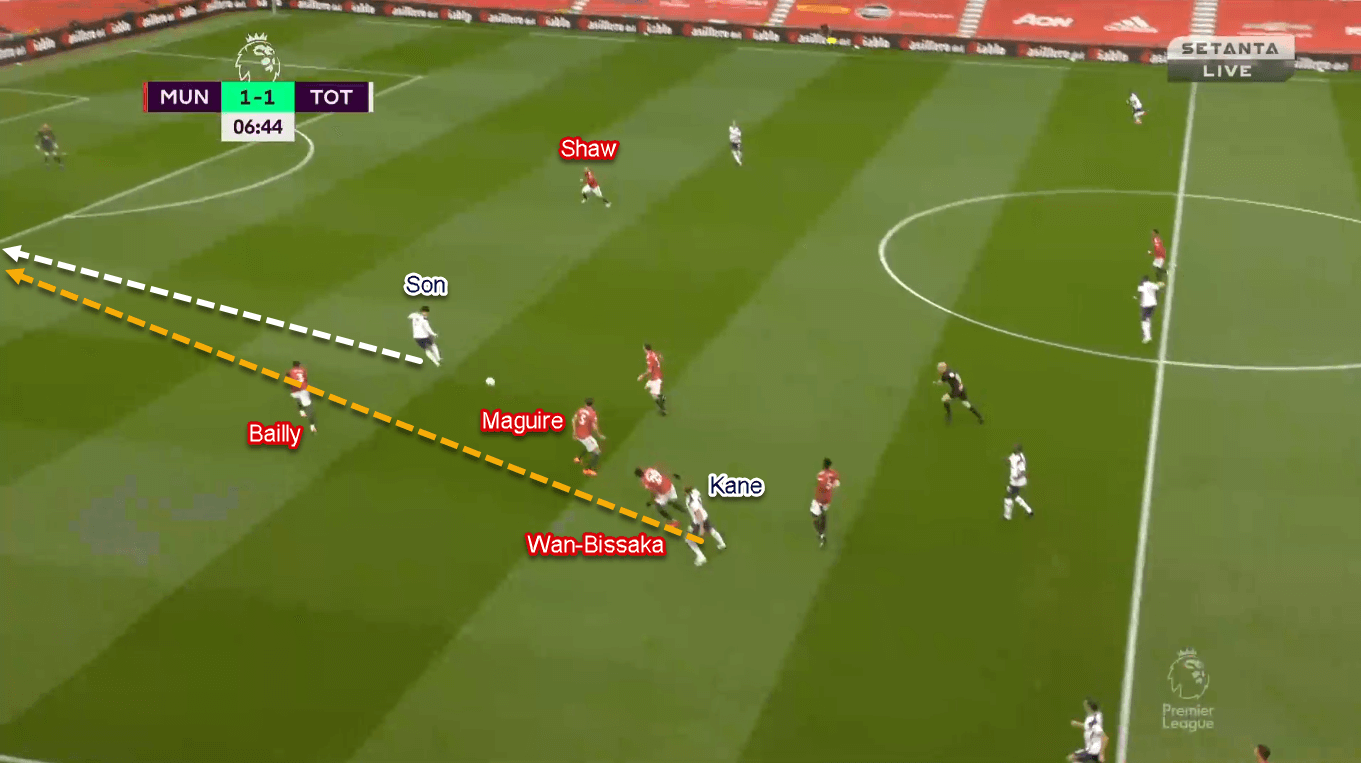
It wasn’t just that, though. Spurs could also build their attacks through the flanks; particularly via Reguilón in the left-wing. We will dig deeper about this in the latter part of the analysis.
United’s defensive plans and its issues (part one)
Initially, United defended in a medium-high 4–2–3–1. In that shape, they were more ball-oriented, particularly the central attackers. This means either Martial or Fernandes would press the on-ball Spurs’ centre-back while the other shuts the nearby centre-back. The objective behind this was to force Spurs to play long balls upfront and even steal the ball if possible. You can see the example in the previous section.
The 4–2–3–1 deployed by United had some issues. Firstly, it wasn’t compact vertically. It means that Spurs could progress the ball quite easily in between the lines. Secondly, the wingers were positioned too advanced. This would make gaps appear in the midfield (in front of Wan-Bissaka and Shaw).
Spurs might escape the press and exploit the problems by playing the ball through the flanks. This means that they would access Aurier or Reguilón in the middle third before continuing the attack. United reacted this by instructing their ball-side full-back to step up from the backline and press Spurs’ on-ball player.
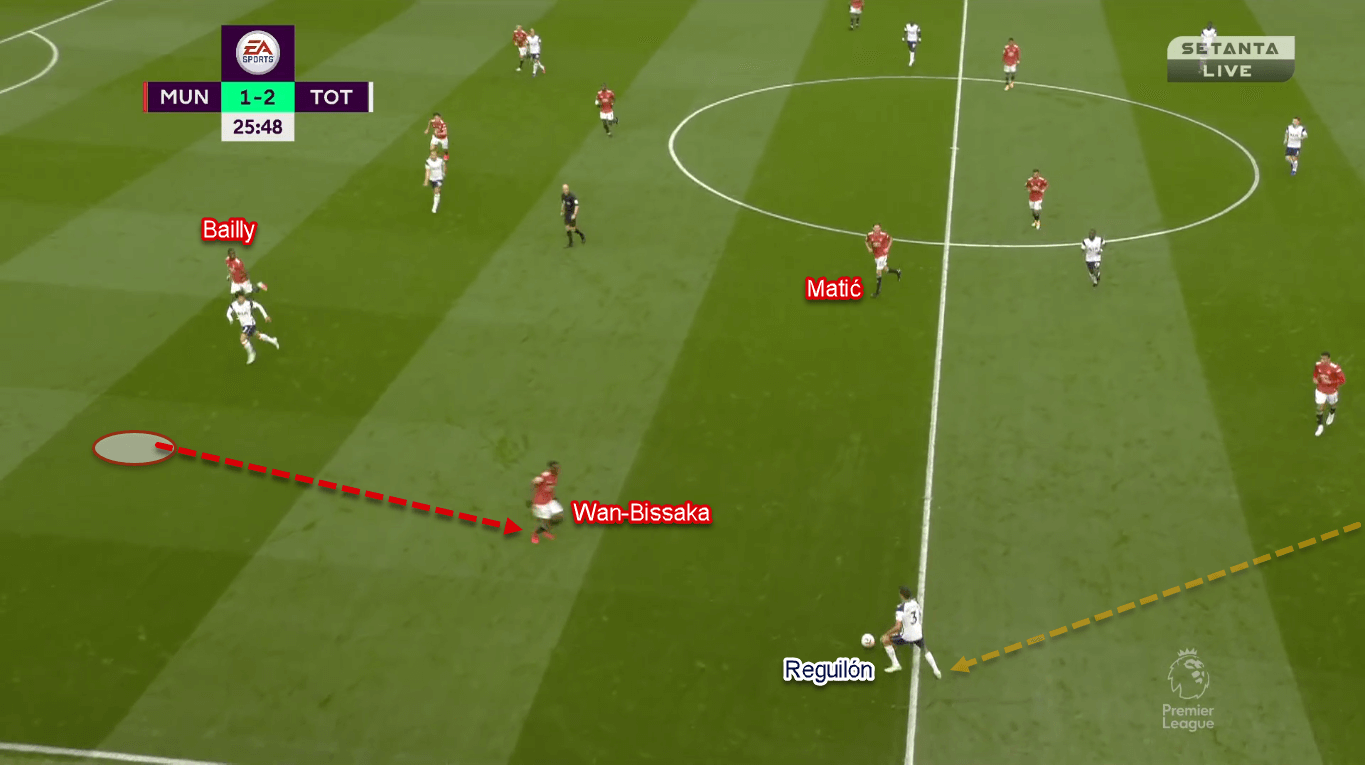
United’s defensive plans and its issues (part one)
Later on, Solskjær shifted his team’s defensive shape to a mid-block 4–4–2. In this shape, the wingers should be positioned closer to Matić and Pogba rather than to Martial and Fernandes upfront. Yet, the opposite happened. The wingers kept their aggressive positioning and the flank issue still occurred.
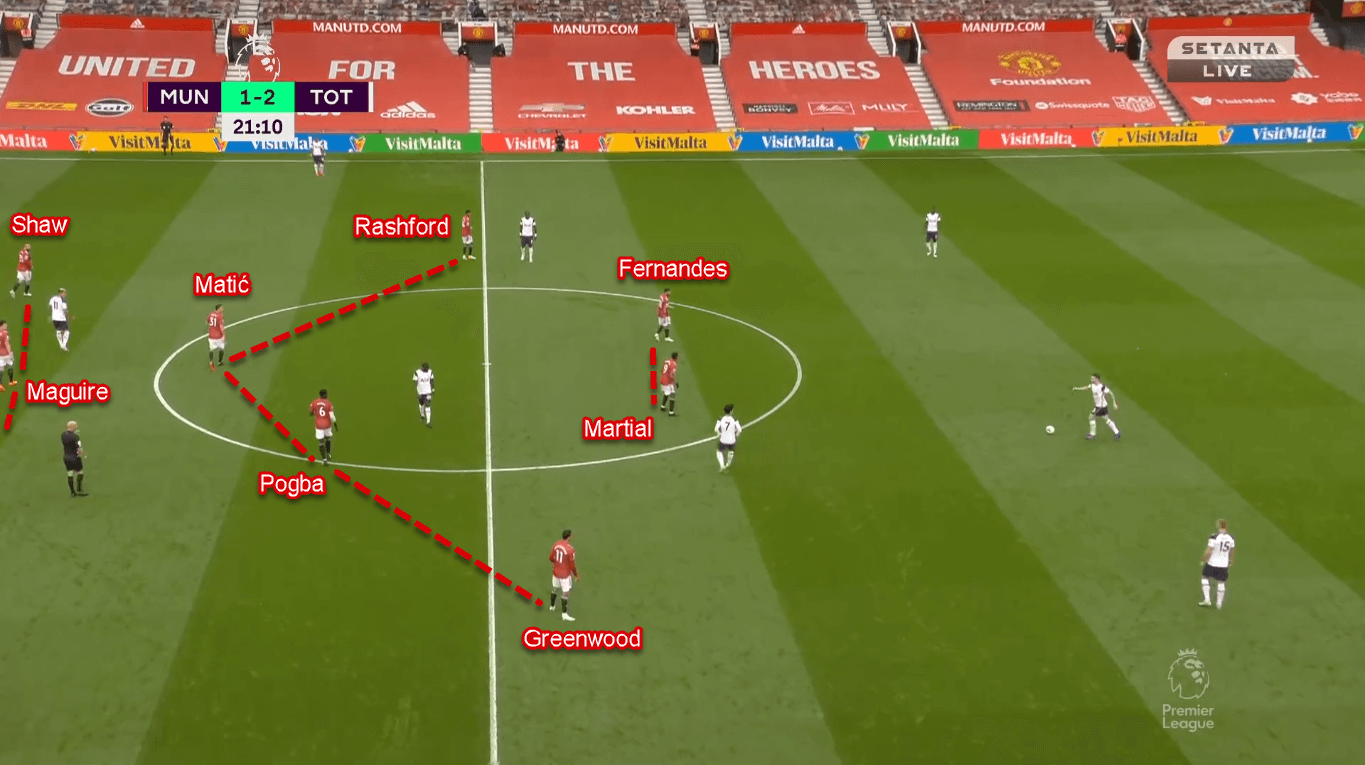
Another issue in United’s 4–4–2 was their lack of compactness in the midfield. There was no clarity whether Pogba and Matic defended zonally or in a man-oriented manner. This further enlarged the gap in United’s midfield, both in between the players and in between the lines. No wonder why Spurs were able to overrun the central area for times to times throughout the game.
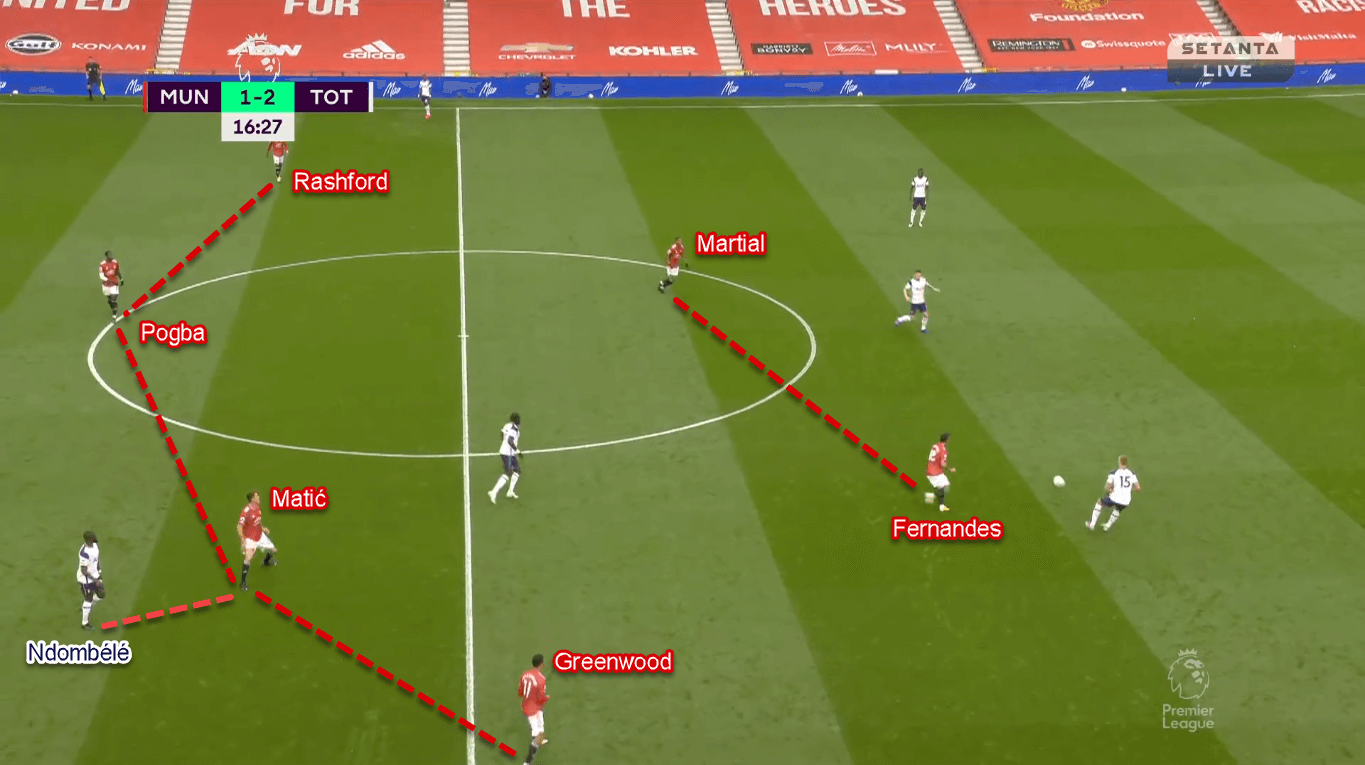
Midfield massacre: United’s perspective
United had to lose Martial after a controversial expulsion just before the half-hour mark. Since then, Solskjær changed his team’s defensive structure to a 4–2–3/4–4–1. Yet, there was no big change in United’s system out of possession.
When United didn’t have the ball, they kept trying to press Spurs up to their penalty box. They also pressed actively when the Lilywhites tried to attack from the flanks. However, they didn’t utilise the full-backs as often as before. There were two options that United used, as follow:
First, they would let the ball-side midfielder to step out and press Spurs’ full-back. In the process, either Matić or Pogba would leave the midfield line and come to press to the touchline. By doing so, they would let United’s wingers stay forward and focusing on the visitors’ centre-backs.
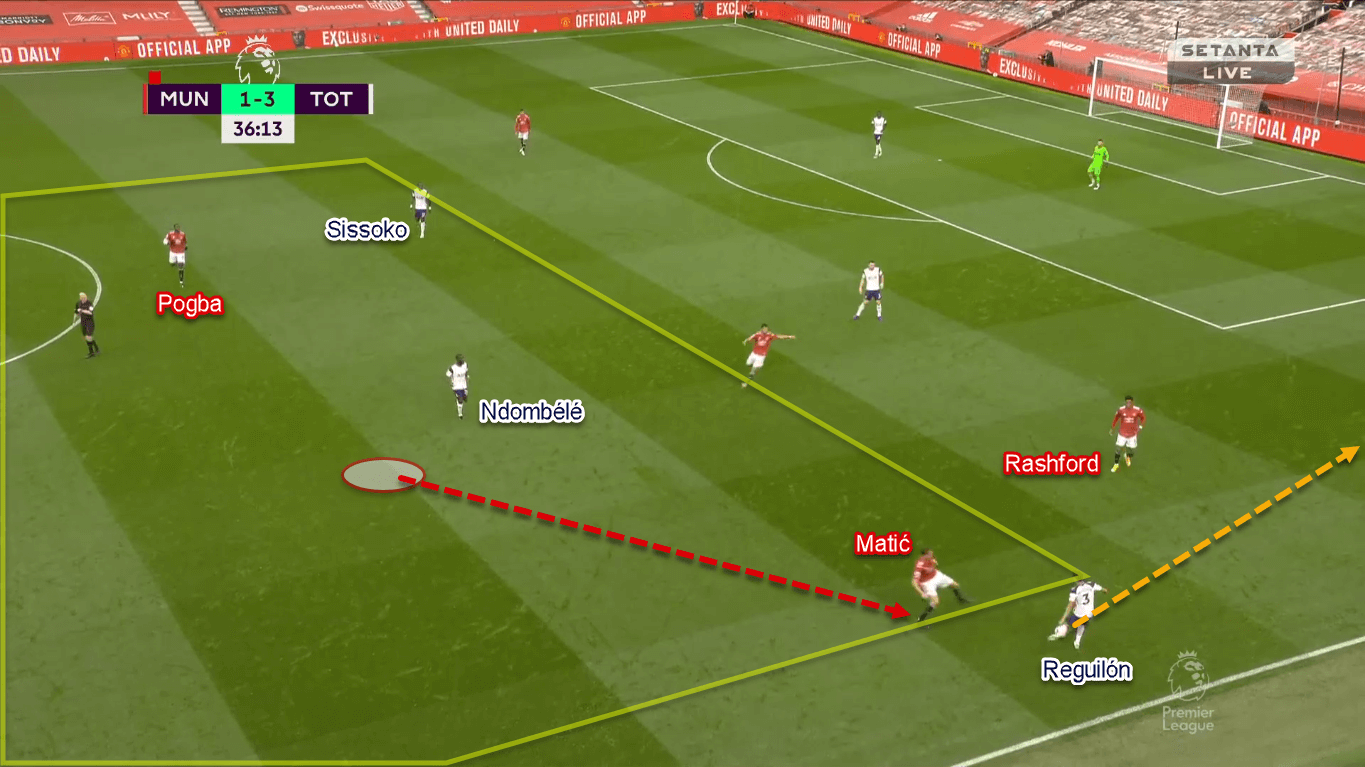
Second, United would rely on the ball-side winger to execute the press. It means that both Matić and Pogba would stay in the middle, while Rashford or Greenwood press on the Spurs’ full-backs. This could be found more often, particularly because there was a closer distance between United’s wingers and Spurs’ full-backs.
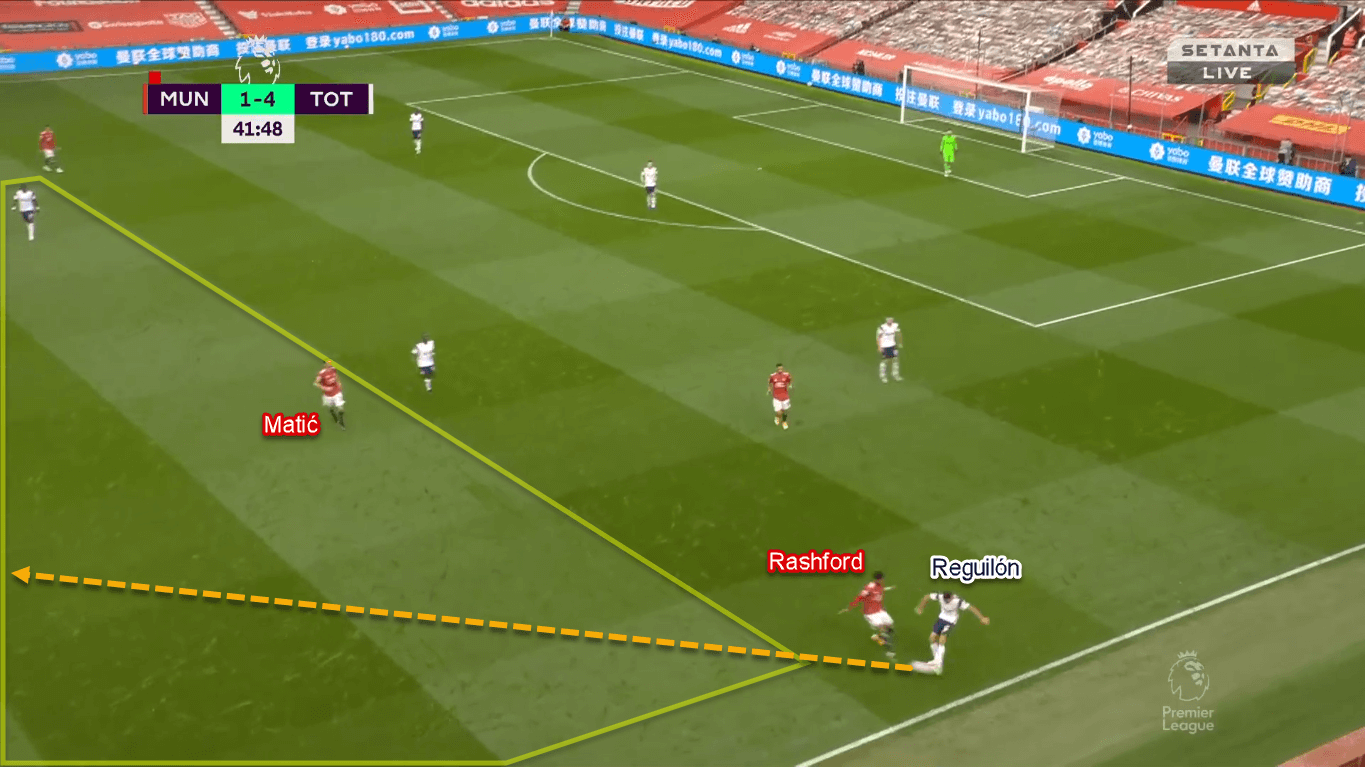
Midfield massacre: Kane led the chaos
However, both approaches had a similar issue: allowing Tottenham huge space in between the lines. It was even more obvious in the first approach since United would only have one player in the midfield line. In the second approach, United’s midfield was a bit more protected, since both Matić and Pogba were staying central. Yet, Spurs kept overrunning the midfield throughout the game. How did Spurs do that?
The most notable tactic that Mourinho used was by allowing Kane to drop from his position. By doing so he would help Sissoko and Ndombélé to outnumber Pogba and Matić in the middle. Another feature was the use of the wingers. Both Lamela and Son were tasked to pin United’s backline and further give Kane more space when dropping back.
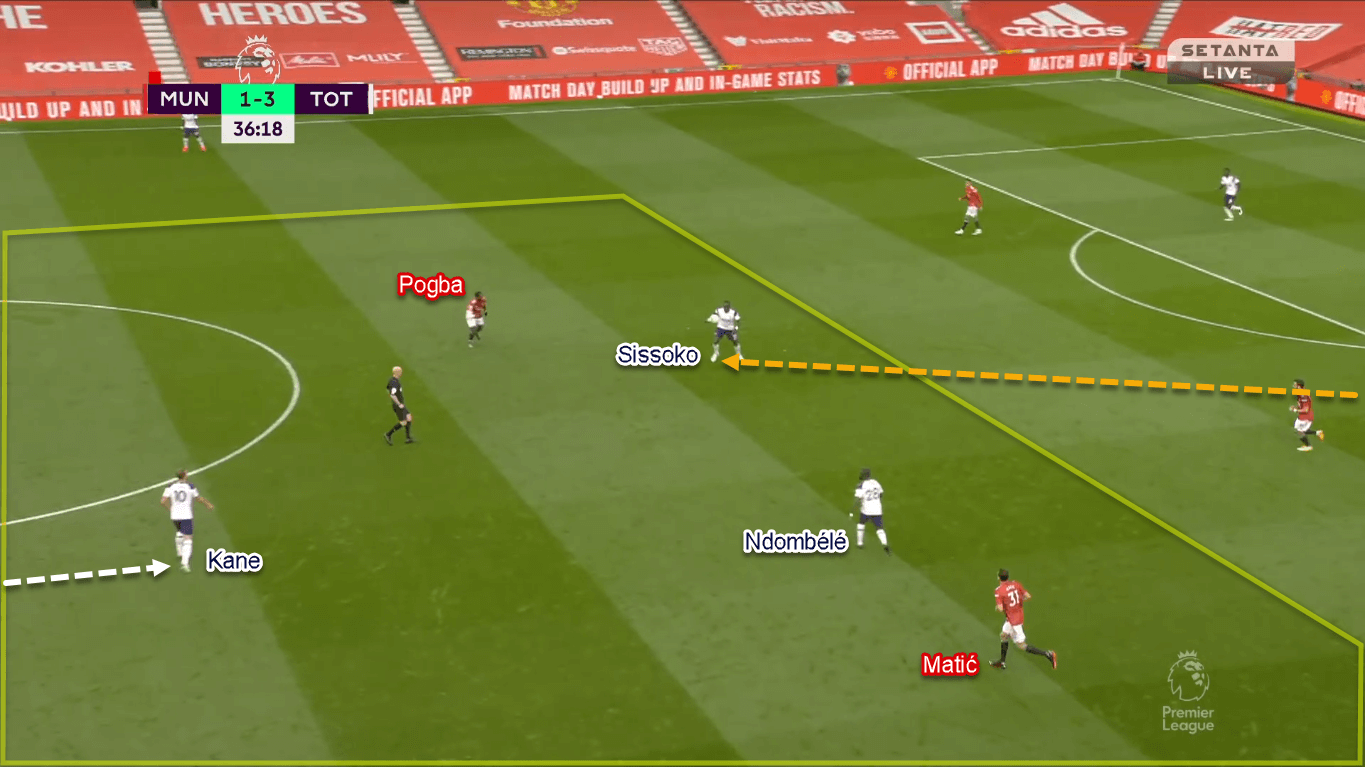
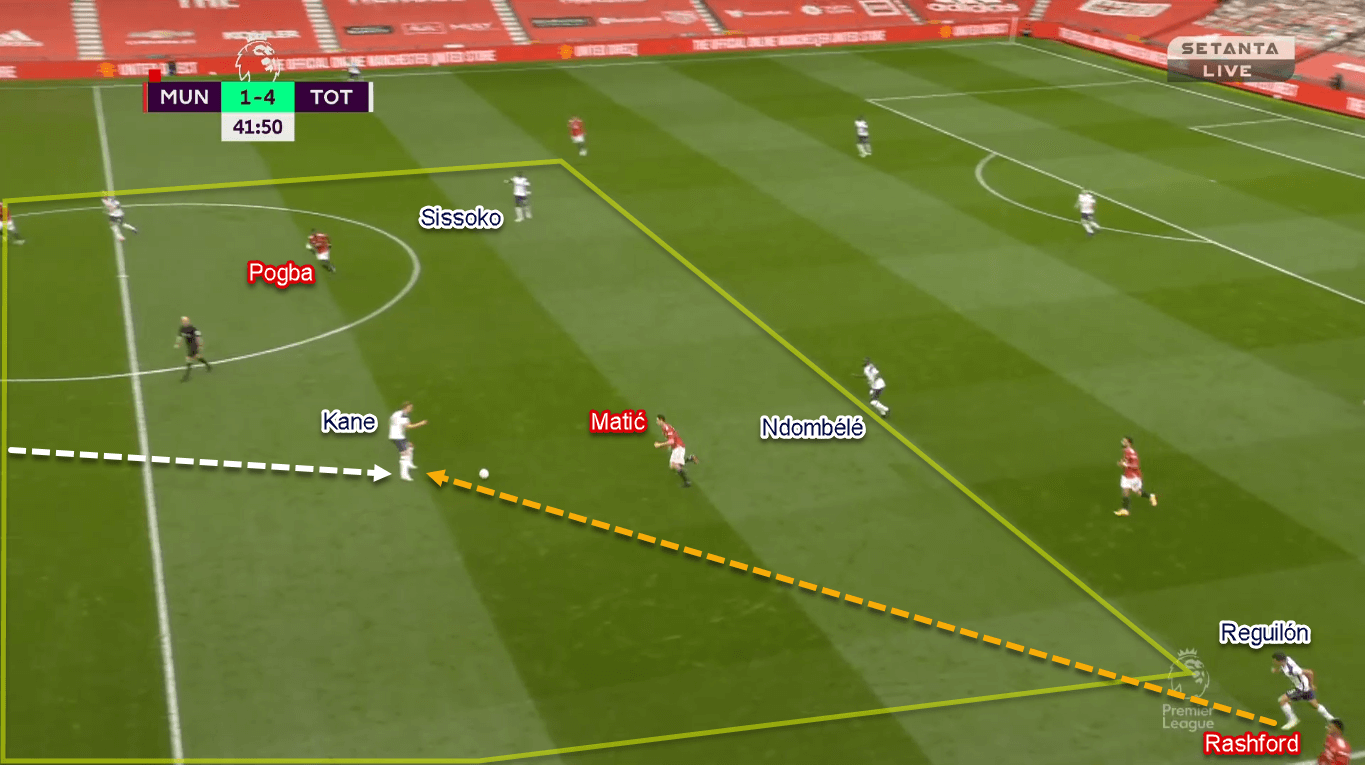
Kane would immediately switch the ball to the right flank as soon as he got the ball. That wide area was completely open because Lamela has pulled Shaw inside with him. The huge space then could be attacked by the marauding Aurier. Unlucky for United, their far-side winger rarely tracked back in defence. That’s why Aurier easily ran riot throughout the game; even getting a goal for himself in the second half.
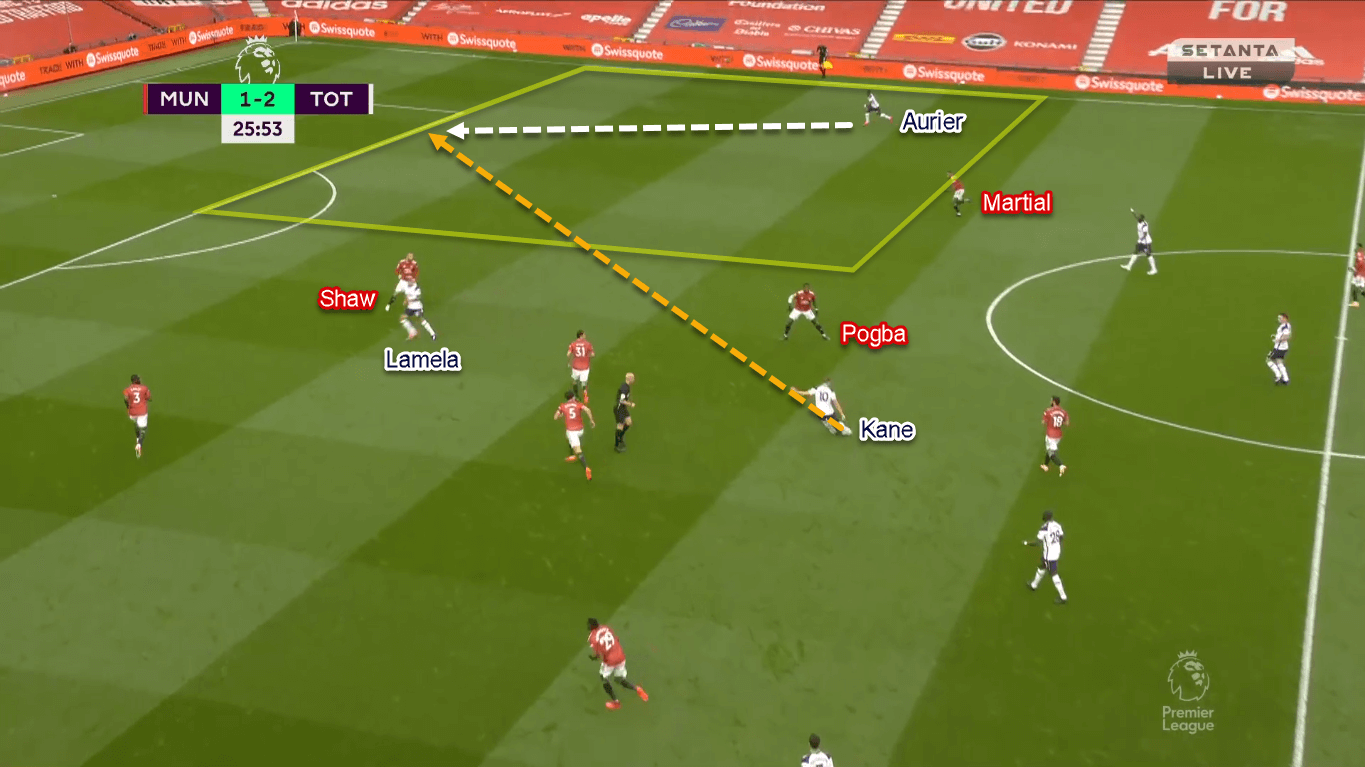
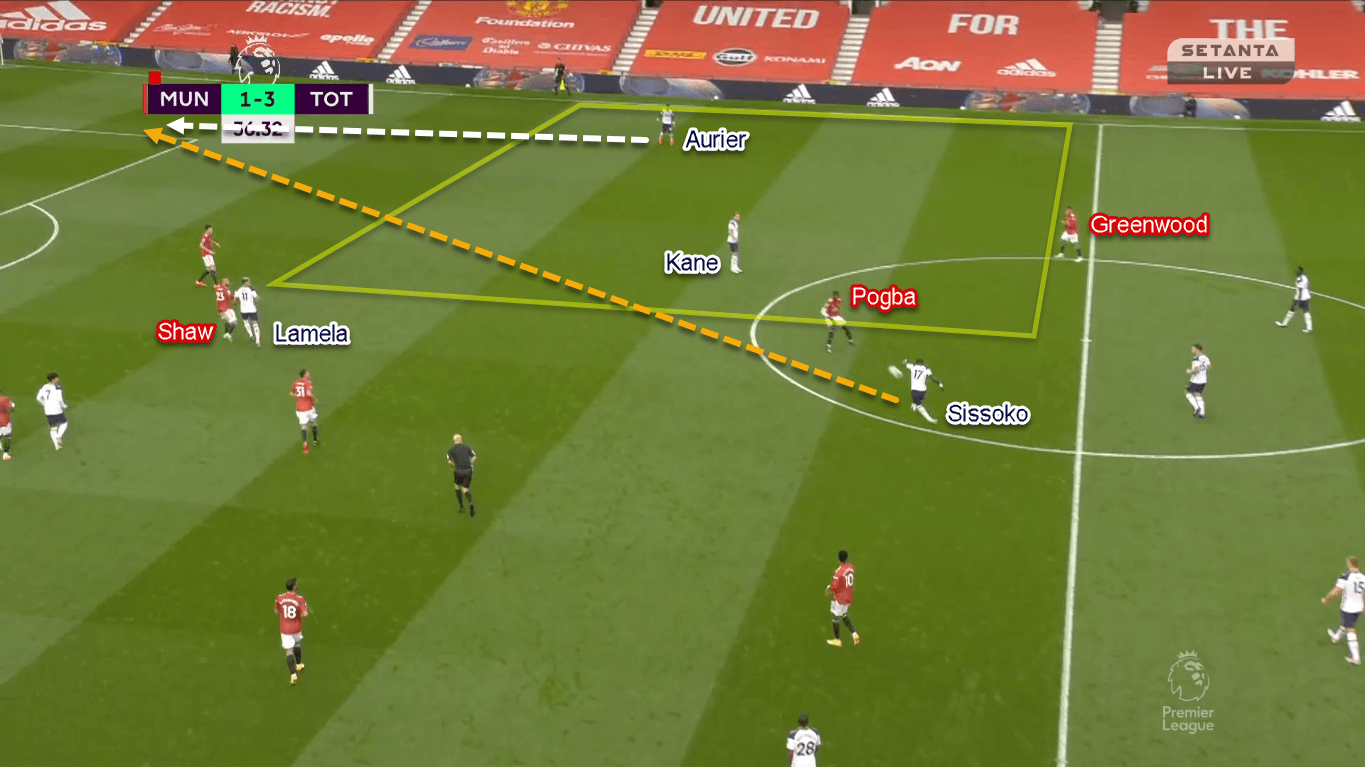
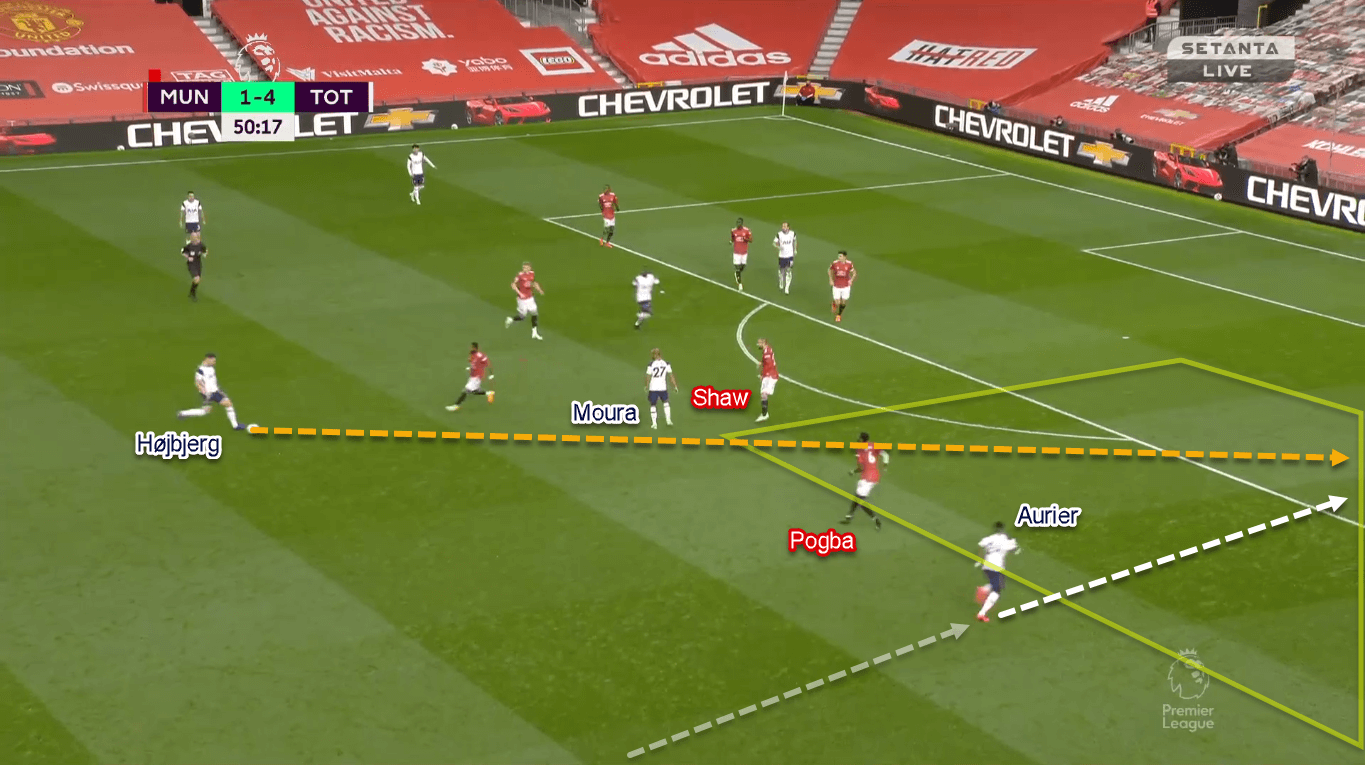
Conclusion
Disastrous. That’s the only word that fits United’s performance. Solskjær’s tactics were poor, and his reluctance to play safer only gave his men more humiliation. Not only that, comical errors by Maguire, Bailly, and Shaw were nothing short of amateurish. As a United fan myself, I must say that this result is more embarrassing than the 2011 defeat to Manchester City.
Oppositely, full credits must be given to Mourinho and his brilliance. He cleverly adjusted his defensive tactics to nullify the Red Devils’ left-flank threat. He also superbly punished the weaknesses in United’s defensive block and managed his team to get six goals. Not bad for a defensive manager, eh?





Comments